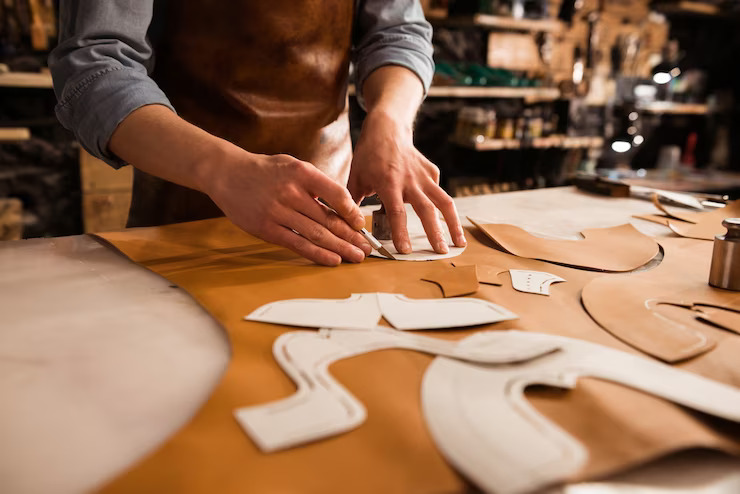- (+91) 7399001009
- support@careertoday.info
Specialised Institutions
The competition is fierce for those rare seats in IITs, IIMs or AIIMS. Don't lose hope. We have a parallel stream of good institutions where the outcomes are equally good, if note better...
National Dairy Research Institute, Karnal

The growth of dairy industry in India owes much to the pioneering efforts of this karnal-based institute
National Dairy Research Institute has contributed immensely to the growth of dairy industry and well being of millions of milk producers and consumers. NDRI is continuously working to develop its R&D and HRD programmes to serve the nation in food security, employment generation and economic prosperity.
The National Dairy Research Institute (NDRI) is a unique institute in its own league, being a premier institute in dairy research. India is at present the world’s largest producer of milk and several dairy products. That is why there is an urgent need to have institutes like the NDRI to facilitate a fundamental aspect of Indian rural as well as urban life. Basic and applied research is conducted with the aim to improve animal productivity while also generating techniques which the rural and semi-urban masses can utilize. Human resource requirements for the formal industry are also met by NDRI. It was established in 1923 in Bengaluru as the Imperial Institute of Animal Husbandry and Dairying. Post-independence, the location was shifted to its present one in Karnal in 1955. Bengaluru retains some of the facilities to act as a regional centre for the southern states. An eastern centre was added later on in 1964 in kalyani, West Bengal. Deemed University status was accorded in1989. It is now attached to the ICAR (Indian Council for Agricultural Research).
Courses
At present, the NDRI offers courses at three different levels. It has B.Tech in Dairy Technology at the under-grade level. At the master’s level, there are options between M.Tech, M.Sc. and MV Sc. in dairying. One can also go for the doctorate in dairying. Dairy does not only include cows and buffaloes but also other milch animals.
Eligibility
For admissions to B.Tech course, a PCM (Physics, Chemistry, and Mathematics) combination is a must at class 12. Since the principal medium of teaching is in English, so proficiency in the same is also needed till school-leaving. An entrance test is conducted by the NDRI on the guidelines of AICTE with PCM being the syllabus. Shortlisted students are then called up for the counseling process, post which the final selection is made on a weighted score. There is a similar procedure applied at the master’s level for selection, with some differences depending on the course. Certain courses are also offered at this level at the Bengaluru and Kalyani campuses.
Extracurricular Activities
Due to the semi-rural setting of the campus, sports activities are encouraged. There is an athletics circuit, plus facilities for indoor sports at each hostel. Youth festivals and competitions are frequently organized. A student magazine named Milk Track is periodically published from the institute. A strict anti-ragging and student empowerment policy is also in place.
Central Institute of Fisheries, Kochi
Nautical Engineering Training, Kochi

CIFNET shapes India’s blue revolution by creating technical manpower for marine operation, including fishing, navigation and marine engineering….
The Central Institute of Fisheries, Nautical and Engineering Training in Kochi was set up under the mandate established by the Department of Fisheries and Animal Husbandry which is a part of the Government of India. The roots go back to 1945 when two training centres were established, one each for marine and inland fishing. The marine fishing centre was in Mandapam in Tamil Nadu, while Barrackpore in Bengal housed the one for inland. All these efforts got collated in 1963 with this establishment. Its purpose is to conduct research and training that will aid people for whom fishing their livelihood. Two more centres were later established at Chennai and Visakhapatanam in 1968 and 1981 respectively.
Knowledge Provider
The CIFET has established itself as a strong knowledge provider to the fisheries concerns from foreign countries as well. Training have been conducted for nationals from Oman, Bangladesh, Sri Lanka, Maldives, Nigeria, Laos, Yemen, Sudan, Zambia, Tanzania, Ghana and Philippines. Lot of intra-nation collaboration also take place under schemes such as Colombo Plan and the SCAAP (Special Commonwealth African Assistance Programme). CIFET’s reputation has not been dimmed in spite of the Indian Maritime University being established in 2008. The CIFET has a fleet of vessels of different shapes and sizes docked for all training purposes.
Courses
Bachelors in Fishery Sciences and Nautical Sciences BF Sc.(NS) is the flagship course being offered here. It is approved by the University Grants Commission (UGC) and by the Directorate General of Shipping. It is affiliated to the CUSAT (Cochin University of Science and Technology). CIFET is of the few institutes in India which has the DGS’s approval for conducting courses on GMDSS (Global Maritime Distress and Safety System) and Radar Plotting for Collision Avoidance. Even though the BF Sc. Is a graduation degree, it can only be pursued after another science or engineering graduation is completed. One also needs to satisfy a minimum qualification in the English language. Besides this, there are also refresher courses for fishing professionals who went to relearn the newer aspects.
Top Class Infrastructure
Infrastructure at CIFET has little comparison in the region. Beyond the usual classrooms, workshops, laboratories, library and hostel, there is a simulator centre and nautical-chart practice hall. There are separate divisions for Marine Engineering, Training and Nautical. It is most relevant for lesser known aspects such as deep-sea fishing or handling of previously exotic species such as tuna.
Central Footwear Training Institute, Chennai

CFTI’s goal is to earn industry trust, based on making the students meet the performance expectations of the industry through its training programme
The Chennai-based Central Footwear Training Institute (CFTI) was established in the year 1957 when an acute requirement for such an organization was deeply felt. The Ford Foundation helped in setting this up. It was initially known as the CFT Centre. From 1996, the CFTI Chennai has been an autonomous institution. It took up the National Leather Development Programme under the guidance of the UNDP (United Nations Development Programme). So far, under its various avatars, this institutions has trained thousands of professionals from India and abroad. The focus has always been on skills and vocational training rather than imparting formal academic courses.
Making the trainees industry-ready
One of the key objectives is to train footwear designers. For this, short-term courses and certifications are available. The use of modern technology must be made in the process. There must be complete alignment between the designers and the technologists. The products built here must be able to boost exports in this field. For this to happen, international standards will need to be applied to Indian manufacturing. Personal must also understand how to best maintain the machinery.
The CFTI has always tried to hone strong linkages with the industry and markets, as well as with other educational bodies and institutions. It is now heavily into developing a strong database which can be utilized by different stakeholders. It can also prove to be an educational material to train future professionals.
Quality Standards
CFTI in Chennai has received multiple accreditations and certifications. It is member of SATRA (Shoe and Allied Trade Research Association). It has been accredited by the Leicester College and Textile Institute. This has allowed CFTI to provide long-term PG diploma courses in Footwear Technology and Footwear Design. There are also management courses infused with these aspects. All courses here are NSQF approved. Limited hostel facilities are also available. CFTI is a major consultancy body, providing key inputs to corporates on manufacturing concerns in its specialization areas.
School of Planning and Architecture, Delhi, Bhopal and Vijayawada

Course offerings: B. Tech (Planning, Architecture), M. Tech (Urban Design, Industrial Design, Planning, Building Engineering & Management, Landscape Architecture) and PhD
The School of Planning and Architecture (SPA) has historical significance as it was initially opened back in 1941 as a department within the Delhi University. Its current name was adopted in 1959 when the full DU affiliation was brought in. The government soon realized the pressing requirement for a full-fledged institute, so SPA was granted Deemed University status in 1979. In 2008, further expansion took place with the establishment of two more SPAs in Bhopal and Vijayawada. These three SPAs are now deemed as Institutes of National Importance by the central government which nullifies the lack of recognition from the AICTE (All India Council for Technical Education).
Courses
Courses are offered right from the undergraduate level up to PhD. While the Bachelor of Architecture course predates independence, the Bachelor of Planning was introduced later in 1979. Both these courses last five years. The national level JEE (Joint Entrance Examination) is to be taken for admission here. These courses are very much hands-on with focus on field assignments. At the master’s level, there are a few more options. They can be pursued in Urban Design, Industrial Design, Planning, and Building Engineering & Management and in Landscape Architecture. The Master’s in Planning has further specialization in the fields of Regional Planning, Transport Planning, Urban Planning, Environmental Planning and Housing. Each of these have separate departments in order to facilitate enhanced research. At this level, admissions are via the GATE (Graduate Aptitude Test in Engineering). This associates with the GATE and JEE enables the SPAs to attract the most meritorious candidates.
Campus
SPA Delhi has a vibrant campus around ITO. There are separate academic wings for Architecture and Planning. One of the greatest strengths of the SPA Delhi is its library. It is extremely well-stocked and digitally integrated. Electronic resources such as JSTOR, ISID, SAA and WeL enable students to access a huge variety of online academic material. All this and much more has contributed to several prominent personalities having studied at the institute.
Indian Institute of Astrophysics, Bengaluru

Three main courses of study are imparted at the IIAP in Bengaluru. There is a PhD. And there are two integrated PhDs. One of them is with an M.Tech, another with an M.Sc. An internship is compulsory at all the programmes.
IIAP traces its origins to an observatory set up in 1786 at then Madras which from 1792 began to formally function at its Nungambakkam premises.. IIAP is the premier institute for astronomy and astrophysics in India. It has two streams of students. One group joins the PhD program after a PG degree and performs research in astronomy and astrophysics; the second group joins MTech-PhD program where MTech is done at Calcutta University and PhD at IIAP.
The IIAP is considered the premier institute in the country for research on astronomy and astrophysics. A series of observatories and laboratories are connected to the Indian Institute of Astrophysics in Bengaluru. These are located in Kodaikanai (Tamil Nadu), Kavalur (Tamil Nadu), Hosakote (Karnataka), Gauribidanur (Karnataka) and the Indian Astronomical Observatory in Hanle (Ladakh, Jammu & Kashmir). The origins of the IIAP can be traced back to the year 1786 when an officer of the East India Company set up an observatory in Madras (Chennai). The facilities in kavalur and kodaikanal were also created well before independence. But the IIAP was formally inaugurated in 1971 as an autonomous institute.
Functions
The IIAP has been a leader in research within India, but also has its footprints abroad. The topics the IIAP has worked on include galactic astronomy, extragalactic astronomy & cosmology, stellar astronomy, space astronomy, techniques & instrumentation and theoretical astrophysics & physics. The IIAP has now also developed the NLST (National Large Solar Telescope). The Astrosat has also now been created. The Mauritius Radio Telescope is a project the IIAP has undertaken with the island nation based on the Indian Ocean. The deep intellectual calibre of the institutions reflects in the faculty pool available. The faculty here have won numerous national and international awards.
Technical Divisions
The technical division is divided into three main wings. These are for electronics, photonics and mechanical. Computing and the data centre are also key wings of the ILAP, Bengaluru. There are several steps taken by the IIAP to expand on its outreach programme. There is a repository that is maintained for all that has been published over the years. Periodic newsletters have also been created. Academic reports are published on the website so they may be accessed by all scholars who need information on such topics.
Indian Institute of Science Education and Research (IISER)

